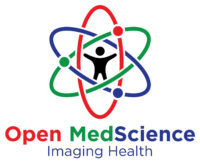Neuroblastoma Targeting Agents – a cancer primarily affecting children, presents unique challenges in diagnosis and treatment. With advancements in medical science, targeted therapies have become increasingly vital. Among these, agents like Iodine-123 or Iodine-131 labelled MIBG (metaiodobenzylguanidine) play a crucial role in both diagnosing and treating neuroblastoma.
Understanding Neuroblastoma
Neuroblastoma Targeting Agents use Iodine-123 and Iodine-131 labelled MIBG as diagnostic and therapeutic agents in neuroblastoma. It highlights their mechanisms, benefits, and the evolving landscape of neuroblastoma treatment, providing a comprehensive view of these crucial medical advancements.
Neuroblastoma, a malignant tumour arising from nerve tissues, predominantly affects children. Its diagnosis and treatment require precision due to the age group it affects and its aggressive nature. This is where radiopharmaceuticals like Iodine-labelled MIBG have made a significant impact.
Diagnostic Advancements: Iodine-123 Labelled MIBG
Iodine-123 labelled MIBG is a radiopharmaceutical agent used for diagnostic imaging. Its mechanism involves the uptake of MIBG by neuroendocrine cells, including those in neuroblastoma tumours. Iodine-123, as a radioactive isotope, emits gamma rays detectable by a gamma camera, enabling the visualisation of neuroblastoma cells.
The use of Iodine-123 labelled MIBG has several benefits:
- High Sensitivity and Specificity: It offers a high level of accuracy in detecting neuroblastoma, even in early stages or small tumour sizes.
- Minimal Invasiveness: As a non-invasive imaging technique, it’s preferable for paediatric patients.
- Guiding Treatment Plans: The detailed imaging helps in planning surgery or other therapeutic interventions.
Therapeutic Approach: Iodine-131 Labelled MIBG
Iodine-131 labelled MIBG, while similar to its diagnostic counterpart, serves a therapeutic purpose. After being absorbed by tumour cells, Iodine-131 emits beta radiation, which destroys the cancer cells from within. This targeted approach limits damage to surrounding healthy tissues.
Iodine-131 labelled MIBG therapy has become a cornerstone in neuroblastoma treatment due to its:
- Targeted Action: Directly targets neuroblastoma cells, reducing the impact on healthy tissues.
- Effectiveness in Advanced Stages: Shows promising results in patients with advanced or recurrent neuroblastoma.
- Palliative Care: Helps reduce symptoms and improve the quality of life in late-stage patients.
Challenges of Neuroblastoma Targeting Agents
Despite their effectiveness, there are challenges:
- Limited Availability: Access to these isotopes can be restricted due to production and logistical issues.
- Side Effects: Patients may experience side effects like nausea, thyroid dysfunction, or bone marrow suppression.
- Need for Further Research: Continuous research is required to enhance efficacy and reduce side effects.
The future of neuroblastoma treatment lies in further refining these agents and exploring combination therapies.
Conclusion
Iodine-123 and Iodine-131 labelled MIBG represent significant strides in diagnosing and treating neuroblastoma. Their targeted approach offers hope in managing this challenging paediatric cancer, with ongoing research promising even more significant advancements in the future.
Disclaimer
The information provided in this article is intended for educational and informational purposes only and should not be construed as medical advice, diagnosis, or treatment recommendation. While every effort has been made to ensure the accuracy of the content, it reflects current knowledge and understanding at the time of writing and may be subject to change as new research emerges.
This article does not replace professional medical consultation. Patients or caregivers should always seek the advice of qualified healthcare professionals regarding any medical condition, diagnostic procedure, or treatment discussed herein. The mention of specific agents such as Iodine-123 or Iodine-131 labelled MIBG is for informational purposes and does not constitute endorsement or guarantee of efficacy or safety.
The authors and publishers accept no liability for any loss or damage resulting from the use or reliance on information contained in this article.
You are here: home »